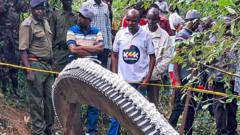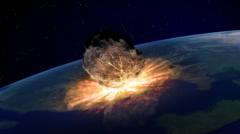While smaller than Apophis, asteroid 2024 YR4 still has the potential to inflict substantial damage. Its trajectory suggests a higher likelihood of impacting populated areas near large cities such as Bogotá, Lagos, and Mumbai, emphasizing the need for close monitoring. Though most of its path traverses uninhabited oceans, the slim chance of a direct hit on urban centers calls for vigilance from the global scientific community.
The kinetic energy unleashed by its potential impact is a key factor in determining the extent of destruction. However, scientists, including physicist Mark Boslough, indicate that the lack of extensive observation data leaves the asteroid's mass uncertain, complicating predictions about the outcomes of a collision or atmospheric explosion.
The discourse surrounding asteroid 2024 YR4 highlights the increasing importance of asteroid tracking and planetary defense strategies as human vulnerability to celestial threats persists. Efforts to develop detection technologies and respond to potential impacts are crucial in mitigating risks from these massive space objects.
The kinetic energy unleashed by its potential impact is a key factor in determining the extent of destruction. However, scientists, including physicist Mark Boslough, indicate that the lack of extensive observation data leaves the asteroid's mass uncertain, complicating predictions about the outcomes of a collision or atmospheric explosion.
The discourse surrounding asteroid 2024 YR4 highlights the increasing importance of asteroid tracking and planetary defense strategies as human vulnerability to celestial threats persists. Efforts to develop detection technologies and respond to potential impacts are crucial in mitigating risks from these massive space objects.
















